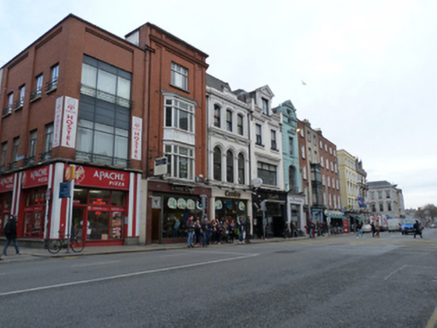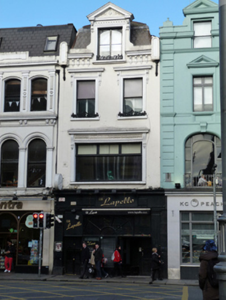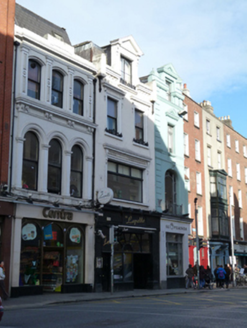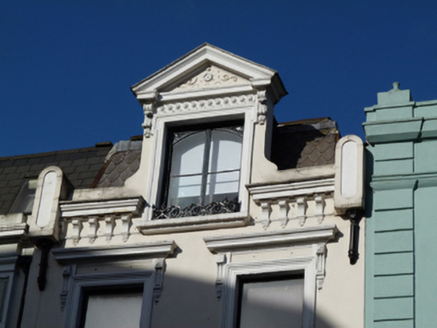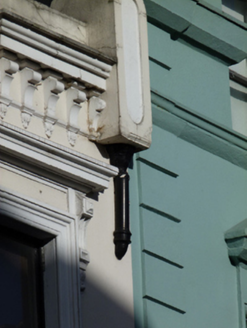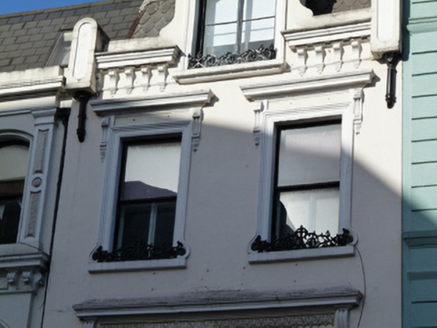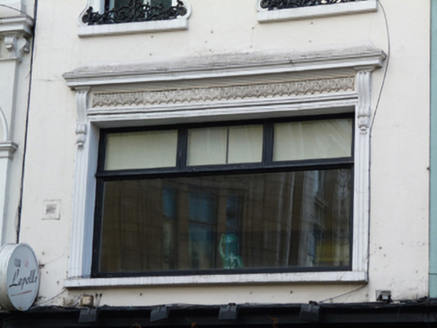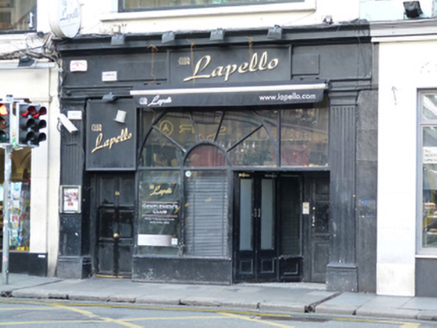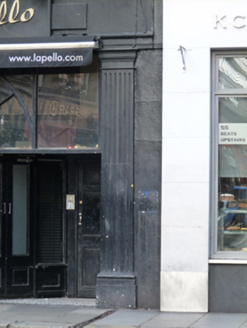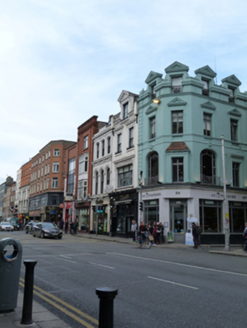Survey Data
Reg No
50020130
Rating
Regional
Categories of Special Interest
Architectural, Artistic, Social
Previous Name
Hynes & Co. Restaurant
Original Use
Shop/retail outlet
Historical Use
Restaurant
In Use As
Building misc
Date
1870 - 1890
Coordinates
315642, 234052
Date Recorded
17/02/2015
Date Updated
--/--/--
Description
Attached two-bay three-storey over basement former house with attic accommodation, built c.1880, with shopfront to front (south) elevation. Now in use as entertainment venue. Fish scale pattern mansard roof having half-dormer window with moulded masonry pediment having scrolled consoles, guilloche detail to fascia and decorative tympanum. Corbelled moulded masonry eaves course flanked by round-headed consoles, cast-iron rainwater goods. Smooth rendered walls. Square-headed openings with masonry sills, moulded architraves, brackets supporting moulded masonry cornices, decorative render panel to fascia over first floor window, cast-iron window guards to second floor windows and half-dormer window, timber casement window to first floor, over-over-one pane timber sliding sash windows to second floor, timber casement window with segmental head to half-dormer window. Shopfront comprising rendered stall-riser, square-headed display windows framed by fluted pilasters and fascia with cornice. Square-headed door openings having timber panelled doors. Located on south side of Dame Street at junction with South Great Georges Street.
Appraisal
This building was occupied by Hynes & Co., proprietors of the Red Bank Oyster Beds, and housed a restaurant in 1884. An increase of value from £68l in 1868 to £80l in 1884 may indicate it was rebuilt between these dates. The work of an experienced stucco worker is evident in the window mouldings and half-dormer window, adding decorative interest to the façade. The fine shopfront retains much of its well considered composition and detailing. Decorative cast-iron window guards provide textural variation to the stucco-work, and are testament to the artisanship involved in the manufacture of cast-ironwork. Dame Street derives its name from a dam that powered a mill on the River Poddle. It was one of the principal streets of the city in the eighteenth century, leading from the Parliament House (now Bank of Ireland) to the Castle. The street was widened and remodelled by Samuel Sproule and Charles Tarrant of the Wide Street Commissioners in the late eighteenth century. As commercial buildings and financial institutions were introduced to the street in the late nineteenth century and early twentieth century many of the buildings were rebuilt or remodelled.
